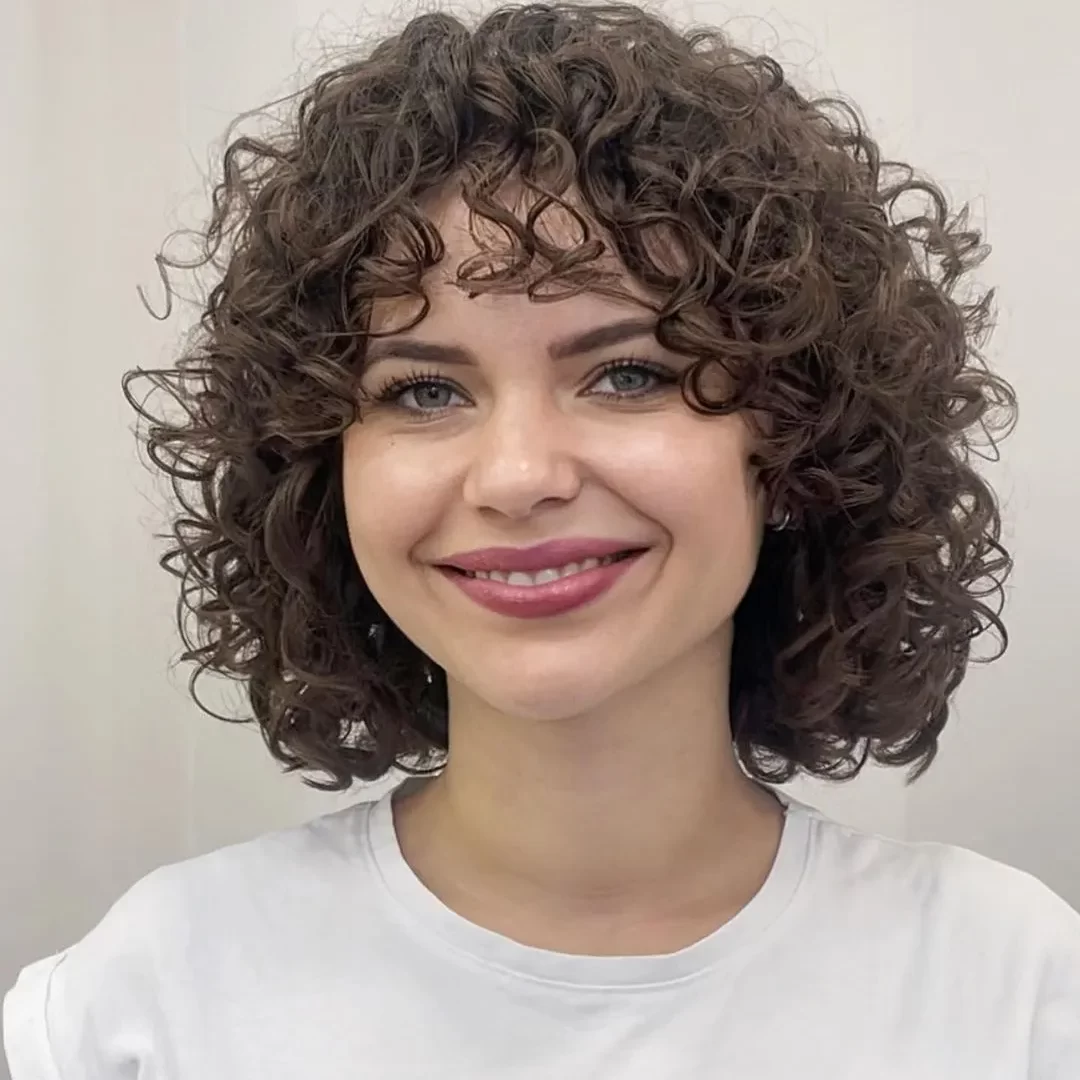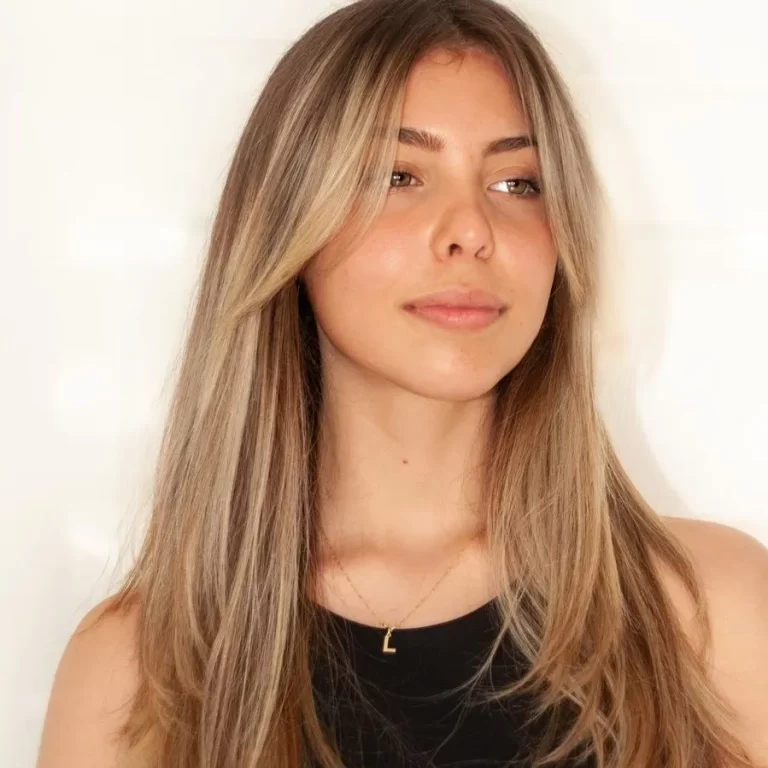
The Timeless Appeal of Perm Hairstyle: A Comprehensive Guide
Introduction: Rediscovering the Perm
Perm hairstyle have experienced a remarkable resurgence in recent years, captivating a new generation of fashion-forward individuals. These chemically treated curls offer a versatile and long-lasting solution for those seeking to add volume, texture, and definition to their hair. The modern perm has evolved significantly from its 1980s counterparts, now offering a range of styles from tight coils to loose, beachy waves. This renewed interest in perms stems from their ability to dramatically transform one’s look while requiring minimal daily styling.
As more people embrace low-maintenance yet stylish hair options, perms have emerged as a popular choice for both men and women. This blog post delves into the world of perm hairstyle, exploring their history, types, maintenance, and impact on modern hair fashion. Whether considering a perm for the first time or looking to update an existing style, this guide provides valuable insights into this enduring hair trend. From the science behind the process to tips for maintaining healthy permed hair, readers will gain a comprehensive understanding of this versatile styling option.

The Evolution of Perm Hairstyles: From Classic to Contemporary
Perm hairstyle have a rich history dating back to the late 19th century. Initially, perms were achieved through laborious processes involving heated metal rods and harsh chemicals. However, the 1920s saw the introduction of the cold wave perm, revolutionizing the industry. This technique allowed for safer and more comfortable perming, leading to widespread popularity. The 1980s marked the heyday of perms, with big, voluminous curls becoming a defining feature of the decade’s fashion. Following this peak, perms experienced a decline in popularity during the 1990s and early 2000s.
Nevertheless, recent years have witnessed a significant revival of perm hairstyle. Modern perms offer more natural-looking results and a wider variety of curl patterns. Technological advancements have led to gentler formulas and improved techniques, reducing damage to the hair. Today’s perms can create everything from tight spirals to loose, tousled waves, catering to diverse style preferences. This evolution has transformed perms from a one-size-fits-all approach to a customizable hair solution. As a result, perms have regained their status as a sought-after styling option for those seeking long-lasting texture and volume.
Types of Perms: Exploring Curl Patterns and Techniques
The world of perms offers a diverse array of options to suit different hair types and style preferences. Traditional perms create uniform, tight curls throughout the hair, providing a classic and voluminous look. For those seeking a more relaxed appearance, body waves offer loose, natural-looking curls that add movement and texture to the hair. Spiral perms create long, corkscrew curls, ideal for individuals with longer hair who desire a dramatic transformation. Multi-textured perms combine different-sized rods to produce varied curl patterns, resulting in a more natural and dynamic appearance.
Beach wave perms have gained popularity for their effortless, tousled look, perfect for those wanting a low-maintenance, laid-back style. For men, modern perms often focus on creating subtle texture and volume rather than tight curls. Digital perms, which use hot rods and a chemical solution, offer a sleek, smooth curl that’s particularly popular in Asian hair salons. Root perms target only the roots of the hair, providing lift and volume without altering the overall hair texture. Each type of perm requires different techniques and rod sizes, allowing for customization based on the desired outcome. Understanding these variations helps individuals choose the perm style that best aligns with their hair goals and lifestyle.

The Science Behind Perms: Understanding the Chemical Process
Perms rely on a fascinating chemical process to alter the structure of hair and create long-lasting curls. The key to this transformation lies in breaking and reforming the disulfide bonds within the hair shaft. These bonds are responsible for the hair’s natural shape and strength. The perm process begins with the application of a reducing agent, typically ammonium thioglycolate or glyceryl monothioglycolate. This solution breaks the disulfide bonds, allowing the hair to be reshaped around perm rods. Once the hair is wrapped around the rods, a neutralizer is applied.
This step reforms the disulfide bonds, setting the hair in its new, curled shape. The size and shape of the perm rods used during this process determine the tightness and pattern of the resulting curls. The entire chemical process can take anywhere from one to two hours, depending on hair length and desired results. It’s crucial to note that perms permanently alter the hair structure until new hair grows in. This chemical reshaping explains why permed hair maintains its curl pattern even after washing. Understanding this science helps explain why proper care and maintenance are essential for preserving the health and appearance of permed hair.
Preparing for a Perm: Essential Steps and Considerations
Proper preparation is crucial for achieving optimal results with a perm. The journey begins with a thorough consultation with a professional stylist. During this meeting, discuss desired curl patterns, lifestyle factors, and any previous chemical treatments. It’s essential to have realistic expectations about the outcome based on your hair type and condition. In the weeks leading up to the perm, focus on nourishing and strengthening the hair. Deep conditioning treatments can help prepare the hair for the chemical process. Avoid using heat styling tools excessively, as they can weaken the hair. If possible, refrain from coloring or bleaching the hair for at least two weeks before the perm.
On the day of the appointment, arrive with clean, product-free hair. However, don’t wash your hair immediately before the perm, as natural oils can help protect the scalp during the process. Wear comfortable clothing that won’t be affected by the chemicals used. Be prepared to set aside several hours for the procedure, as rushing can compromise the results. Bring reference photos to clearly communicate your desired look to the stylist. Lastly, consider the timing of your perm in relation to your schedule, as you’ll need to avoid washing your hair for the first 48 hours after the treatment.

The Perming Process: What to Expect During Your Salon Visit
Understanding the perming process helps alleviate anxiety and ensures a smooth salon experience. The journey begins with a thorough hair wash using a clarifying shampoo to remove any product buildup. Next, the stylist sections the hair and applies a protective solution around the hairline and ears to prevent irritation. The perm solution is then carefully applied to each section of hair, which is subsequently rolled onto perm rods. The size and placement of these rods are crucial in determining the final curl pattern. Once all the hair is rolled, the perm solution is left to process.
This stage can take 15 to 30 minutes, depending on hair type and desired results. During this time, the solution works to break down the hair’s natural bonds. After processing, the hair is rinsed thoroughly, often while still in the rods. The neutralizer is then applied, reforming the hair’s bonds in the new, curled shape. This step typically takes about five minutes. Finally, the rods are removed, and the hair is rinsed once more. The stylist may apply a specialized conditioning treatment to nourish the newly permed hair. The entire process usually takes between two to three hours, depending on hair length and thickness. Throughout the procedure, the stylist monitors the hair closely to ensure the best possible outcome.
Aftercare and Maintenance: Preserving Your Perm’s Perfection
Proper aftercare is essential for maintaining the health and appearance of permed hair. The first 48 hours after the perm are crucial. During this time, avoid washing your hair, tying it up, or using any styling products. This allows the new curl pattern to set fully. When you do wash your hair, use lukewarm water and sulfate-free, curl-specific shampoos and conditioners. These products help maintain moisture and prevent frizz. Limit washing to two or three times a week to avoid drying out the hair. Always use a wide-toothed comb to detangle wet hair gently, starting from the ends and working your way up.
Avoid rubbing your hair with a towel; instead, gently squeeze out excess water with a microfiber towel or an old t-shirt. Deep conditioning treatments should become a regular part of your hair care routine, ideally once a week. When styling, opt for air-drying whenever possible. If you must use heat styling tools, apply a heat protectant and keep the temperature low. Sleep on a silk or satin pillowcase to reduce friction and maintain curl definition. Trim your hair every 6-8 weeks to prevent split ends, which can cause frizz and disrupt the curl pattern. With proper care, a perm can last anywhere from three to six months, gradually loosening over time as your hair grows.
Styling Permed Hair: Tips and Tricks for Versatile Looks
Perm hairstyle offers a multitude of styling options, allowing for both effortless everyday looks and glamorous special occasion styles. For a quick and easy everyday style, scrunch damp hair with a curl-enhancing mousse or cream, then allow it to air dry. This method enhances natural curl definition and reduces frizz. To refresh curls between washes, use a spray bottle filled with water and a small amount of leave-in conditioner. Mist the hair lightly and scrunch to reactivate the curl pattern. For a more polished look, use a diffuser attachment on your hairdryer to dry the hair while maintaining curl shape.
When aiming for a sleeker appearance, use a small amount of anti-frizz serum and gently smooth the hair with your hands. Experiment with different partings to change up your look – a deep side part can add volume, while a center part offers a more symmetrical appearance. For special occasions, consider pin-up styles that showcase your curls. Bobby pins and decorative clips can be used to create romantic updos or half-up styles. Don’t be afraid to play with accessories like headbands or scarves to add variety to your look. Remember, the key to styling perm hairstyle is to work with its natural texture rather than against it. Embrace the unique character of your curls, and you’ll discover countless ways to express your personal style.
Common Perm Myths Debunked: Separating Fact from Fiction
Numerous myths surround perm hairstyle, often deterring people from trying this versatile styling option. One common misconception is that perms always result in tight, unnatural-looking curls. In reality, modern perms offer a wide range of curl patterns, from loose waves to defined spirals. Another myth suggests that perms severely damage the hair. While it’s true that perms involve a chemical process, advancements in technology have made them much gentler on the hair. With proper care and maintenance, permed hair can remain healthy and strong. Some believe that perms are only suitable for certain hair types or lengths. However, perms can be adapted to work with various hair textures and lengths, from short pixie cuts to long, flowing locks.
The idea that perms are permanent and cannot be reversed is also false. While perms do alter the hair’s structure, the effect gradually fades as new hair grows in. Additionally, there’s a belief that permed hair cannot be colored. In fact, permed hair can be colored, though it’s generally recommended to wait a few weeks after perming to allow the hair to recover. The notion that perms are outdated or only for older individuals is far from true. Today’s perms cater to diverse age groups and style preferences. By dispelling these myths, more people can make informed decisions about whether a perm is right for them.

The Future of Perms: Innovations and Emerging Trends
The world of perm hairstyle continues to evolve, with exciting innovations and trends shaping the future of this classic hairstyling technique. Digital perms, which use heat and infrared technology, are gaining popularity for their ability to create smooth, natural-looking curls. This method allows for more precise control over the curl pattern and typically results in less damage to the hair. Organic and ammonia-free perm solutions are emerging as gentler alternatives to traditional formulas, catering to those with sensitive scalps or eco-conscious preferences. Customized perms, where stylists mix different solutions to tailor the treatment to individual hair types, are becoming more common.
This approach allows for more personalized results and better hair health. The trend of partial perms, where only specific sections of the hair are treated, is growing. This technique can add volume to flat areas or create face-framing curls without altering the entire hairstyle. Men’s perms are experiencing a resurgence, with more subtle, textured styles gaining popularity. As gender norms in beauty continue to shift, we may see an increase in unisex perm styles. Advances in hair care technology are likely to produce even more sophisticated perm solutions that minimize damage and maximize curl longevity. The integration of AI and virtual reality in hair styling may soon allow clients to preview perm results before committing to the treatment.
Conclusion: Embracing the Perm Revolution
Perm hairstyle have undoubtedly made a triumphant comeback, offering a perfect blend of retro charm and modern sophistication. This resurgence reflects a broader trend in beauty and fashion: the desire for styles that are both expressive and low-maintenance. Perms provide a unique solution, allowing individuals to enjoy beautifully textured hair without daily styling efforts. The versatility of modern perms caters to a wide range of preferences, from subtle waves to dramatic coils, making them accessible to people of all ages and style sensibilities.
As the technology behind perms continues to advance, we can expect even more innovative and hair-friendly options in the future. The key to a successful perm lies in proper consultation, skilled application, and diligent aftercare. By understanding the process and committing to appropriate maintenance, anyone can enjoy the transformative effects of a perm. Whether seeking to add volume, embrace natural texture, or completely revamp their look, perms offer a exciting path to hair transformation. As we move forward, perms will likely continue to evolve, adapting to changing tastes and technologies while retaining their core appeal. For those considering a change, exploring the world of perms could be the first step towards a refreshing new look and a simplified hair care routine.

